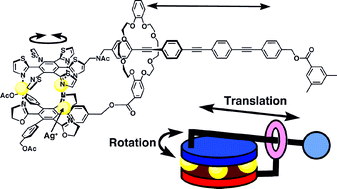A synthetic approach to a molecular crank mechanism: toward intramolecular motion transformation between rotation and translation†
Abstract
A molecular crank mechanism that enables transformation between rotational and translational motions was designed and synthesized. This molecule consists of a molecular ball bearing as the rotational part in which two disk-shaped rotors can rotate relative to each other through ligand exchange and flipping motion, and a


 Please wait while we load your content...
Please wait while we load your content...